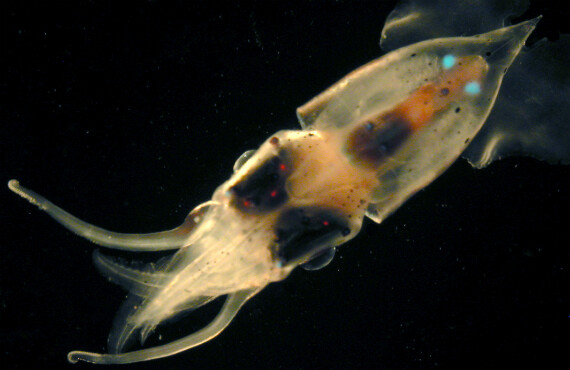Penn Physicists Receive Kaufman Foundation Award to Study ‘Living Optical Devices’
A pair of University of Pennsylvania physicists will receive one of the nine grants being awarded this year by the Charles E. Kaufman Foundation, part of The Pittsburgh Foundation, which supports cutting-edge scientific research in chemistry, biology and physics at institutions across the Commonwealth of Pennsylvania.
Assistant Professor Alison Sweeney and Professor Randall Kamien, both of the Department of Physics & Astronomy in Penn’s School of Arts & Sciences, will receive $300,000 over two years to study living optical devices, or structures within animals that have evolved to shape and direct light in ways that may surpass advanced human technologies.
These animals, including squids and octopuses, naturally incorporate a type of protein called “reflectin" into a variety of structures within their bodies. The reflectin found in certain squids’ cells creates a kind of biological reflector with features smaller than the wavelength of visible light. This enables them to change the amount and color of light their bodies reflect as they move into brighter or darker waters, providing camouflage.
Another species that incorporates reflective proteins, giant clams, has an even more innovative application for them.
“The giant clams use these sub-wavelength structures to optimize the photosynthesis of the algae living in their tissues,” Sweeney said. “They are essentially farming the algae for nutrients.”
Understanding how these structures assemble themselves into arrangements that make these abilities possible requires an interdisciplinary approach, drawing on evolutionary theory, biochemistry, photonics and soft matter physics. Sweeney, a biologist by training, and Kamien, a theoretical physicist who works in the field of self-assembly and soft condensed matter, represent a unique combination of the skill sets necessary to undertake such a study.
“Penn is special,” Kamien said, “in that researchers of our diverse backgrounds can work down the hall from one another and come together to answer these interesting questions.”
Kamien and Sweeney are members of Penn Arts & Sciences’ Evolution Cluster, which is organized to encourage this type of broadly interdisciplinary research around a common theme.








